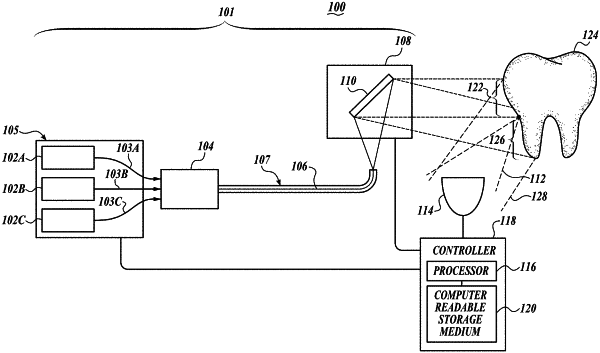| CPC A61B 5/0088 (2013.01) [A61B 5/0086 (2013.01); A61B 2562/146 (2013.01); A61B 2576/02 (2013.01)] | 19 Claims |

|
1. A system for detecting carious lesions on a tooth, the system comprising:
an optical interrogator including:
a light engine for emitting light in a light beam;
a scanning mirror assembly positioned to reflect the light beam;
a single-pixel photodetector; and
a double-clad optical fiber coupler positioned to direct the light beam to the scanning mirror assembly and to direct scattered light to the single-pixel photodetector; and
a controller operatively coupled to the optical interrogator including logic that, upon execution by the controller, causes the system to perform operations including:
causing the light engine to emit the light having wavelengths in a range of about 900 nm to about 1,700 nm;
selectively directing the light beam over different portions of the tooth with the scanning mirror assembly to provide scattered light; and
correlating scattered light signals generated by the single-pixel photodetector in response to the scattered light with the portion of the tooth.
|